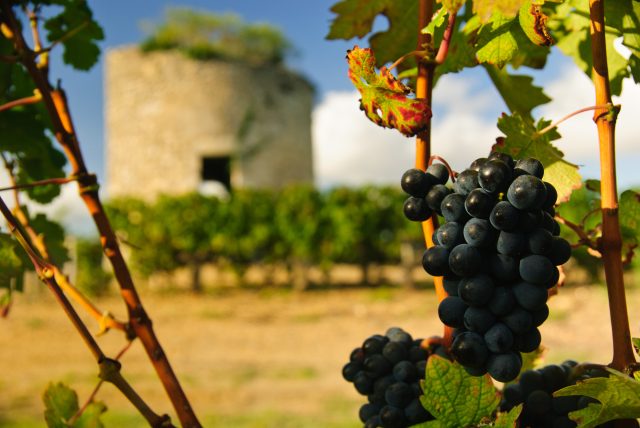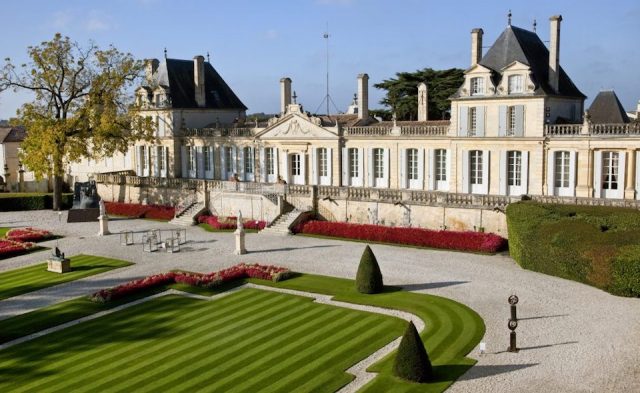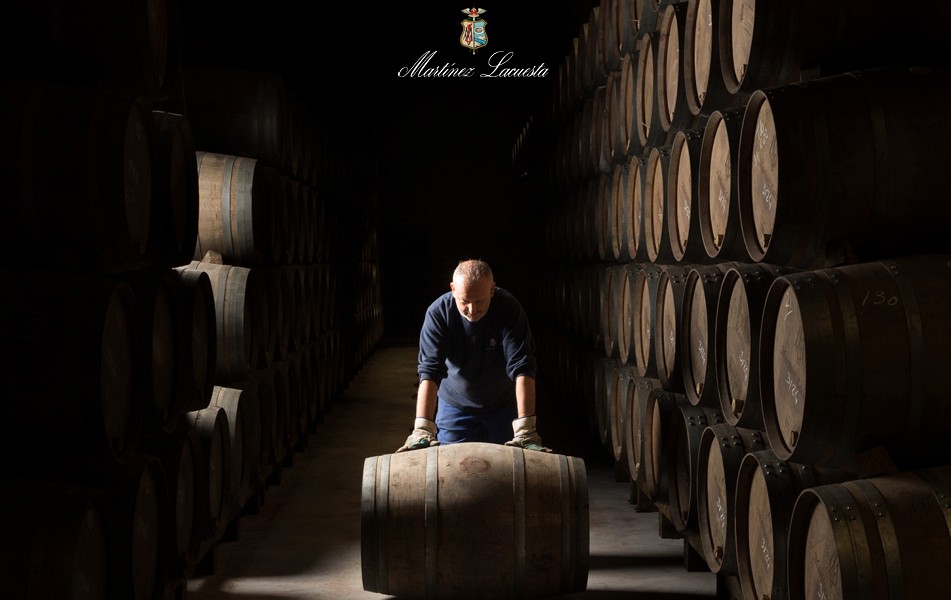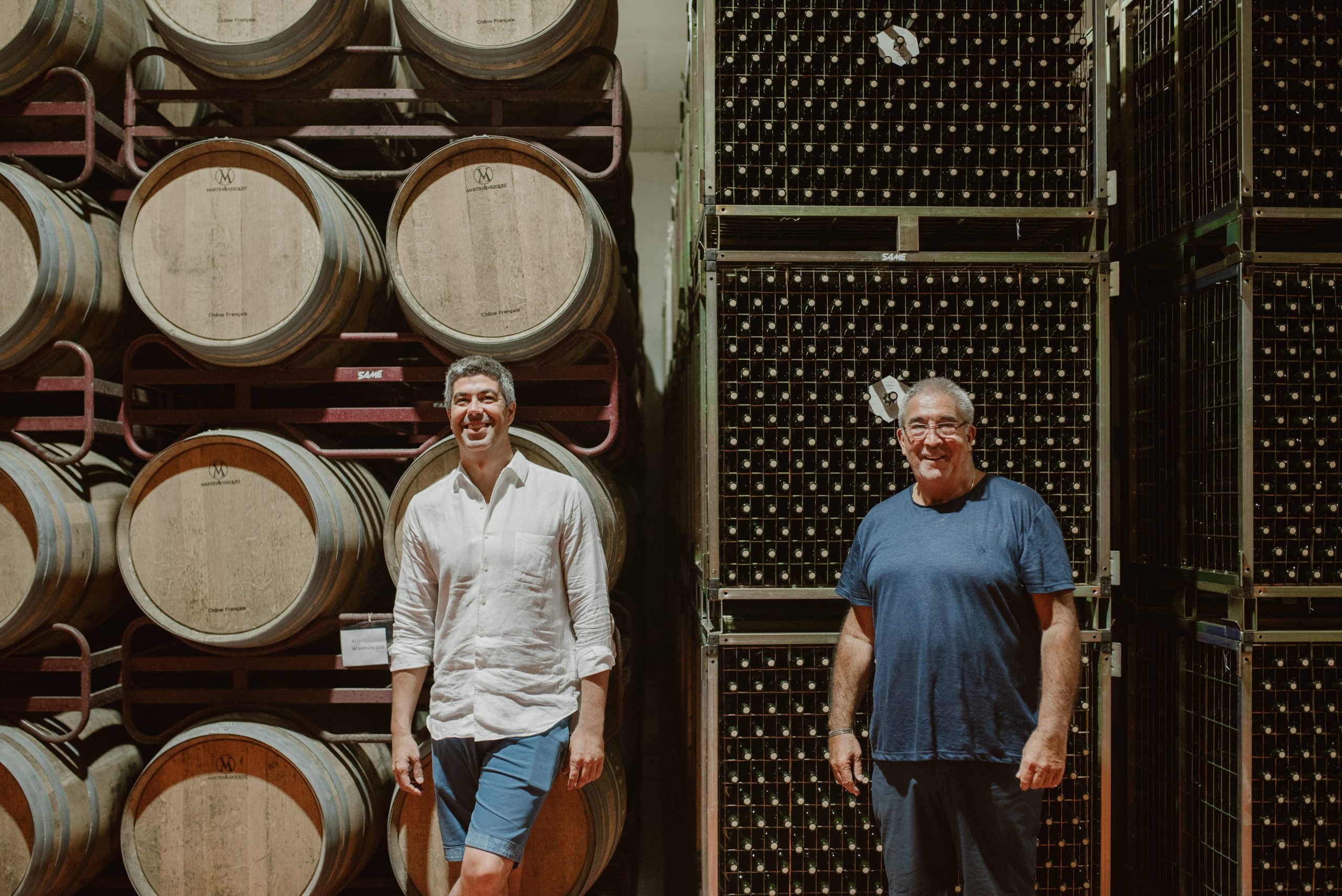Bordeaux 2021 tasting notes: St Julien 2021
In the second half of his tour of the appellation of St Julien, our Bordeaux correspondent Colin Hay gives his verdict on the wines themselves, arguing that St Julien has produced a series of fantastic Cabernet-dominated wines this year.

First, a note on the ratings.
This year, for the first time, I have decided to provide an indicative rating for each wine alongside the published comment. All such comments and ratings are necessarily subjective (they cannot be anything else, when one thinks about it). I would urge you to look at the two together and, if anything, to privilege the comment over the rating. My aim is more to describe the wine in the context of the vintage, the appellation and recent vintages of the same and similar wines, rather than to judge the wine per se.
The ratings, of course, reflect my subjective relative preferences between wines. Your palate is likely differ from mine. I hope that my comments give you at least enough information to be able to recalibrate my ratings and, in so doing, to align them more closely to your palate. To give an example: if the idea of the ‘new classicism’ leaves you cold, you may well wish to discount the (typically high) ratings I have given to wines described in such terms.
Partner Content
2021 is, of course, a highly heterogenous vintage – and, consequently, my ratings span a considerable range (from the very high to the very low). I see little interest, either for the consumer or the producer, in publishing very low scores. Consequently, I have decided not to publish scores for wines that I have rated below 90 (here the range 89-91). Where no rating is published, the wine would have scored 88-90 or below.
Finally, élevage is likely to be very important in determining the quality in bottle of these wines (rather more so than in recent vintages). I am no soothsayer and cannot predict how that will turn out. All en primeur ratings should be treated with caution and taken with a certain pinch of salt. That is never more true than it is in this vintage.
Full tasting notes & ratings
- Beychevelle (St Julien; 57% Cabernet Sauvignon; 38% Merlot; 3% Petit Verdot; 2% Cabernet Franc; 13% alcohol; tasted at the UGCB press tasting and at Lagrange with consistent notes). Dark, glossy and viscous in the glass, with a radiant lilac/pink rim and with good extraction (which, with Beychevelle, you know already is going to be well managed). Chocolate fondant; deep dark bramble compote; graphite and cedar (all very Beychevelle); plump ripe raspberries and freshly hulled wild strawberries; toasted brioche with melted butter. Lovely, with a beautiful vertical lift from the redcurrant and blackcurrant leafiness. Texturally sublime and a little more precise even than usual. Tight, compact, dense and charged with energy and life. Sapid and juicy. Fabulously successful in a challenging vintage. 94-96.

- Branaire Ducru (St Julien; 66% Cabernet Sauvignon; 28% Merlot; 5.5% Petit Verdot; 6.5% Cabernet Franc; 13% alcohol; a final yield of 32 hl/ha; the last vintage to be made in the old vat room, though this makes use of some of the new vats – to good effect; tasted at the UGCB press tasting and at Lagrange with consistent notes). Silkily textured and very well made but with not quite the complexity or compactness of, say, Beychevelle (tasted alongside). It’s very pure and precise, nicely focussed around a core of red and darker berry fruit that is crunchy (croquant) with a little twist of freshly cracked pepper. Linear and well-defined, if just a little monotone. But there are, with gentle aeration, pleasing hints of the graphite to come, bringing additional interest. I suspect that this will end up towards the top of my range after élevage. 92-94.
- Clos du Marquis (St Julien; 67% Cabernet Sauvignon; 19% Merlot; 14% Cabernet Franc; 13.5% alcohol; pH 3.69; IPT 86; a final yield of around a modest 30 hl/ha; tasted at the property). Top quality St Julien, the archetypal graphite and cedar rolled together with the dark purple berry fruit. Sumptuous and yet elegant and refined. From the cool vintage Cabernet on the nose all the way to the long and tapering finish, this exudes precision, class and definition. There’s a lovely cool tranquillity to the mid-palate, an impressive natural ripe sweetness to the rich, dark, bright fruit and, of course, super fine satiny tannins. This is long and, when one thinks about it, actually rather broad-shouldered. But it feels less massive than it is because of the velour and finesse of the tannins (but look at the considerable IPT). Tender and refreshing with a delightful cedar-coated sapid finish. Don’t overlook this in racing to Las Cases itself! 92-94.
- La Croix Ducru-Beaucaillou (St Julien; 64% Cabernet Sauvignon; 32% Merlot; 4% Petit Verdot; 12.5% alcohol; pH 3.84; IPT 92; aging in oak barrels, 60% of which are new). Huge sacrifice of volume (with green harvesting as well; tasted at the property). Very Cabernet Sauvignon dominated, as the raw numbers suggest for La Croix, with a pure and yet supremely elegant dark crunchy berry fruit – brambles crushed together with raspberries and a little cassis. The overall impression is of a still, calm relaxing purity. The tannins are very finely-grained but substantial. This isn’t exactly broad-shouldered or massively structured, but it is just a little foursquare, feeling at this nascent stage somewhat rigid and stolid – less supple and lithe than some. But I am impressed by the clarity in the mid-palate all the same. As it unfurls over the palate the acidity builds, with the structure fanning out towards the aerial finish. Big, certainly elegant but chunky and substantial, with just a slight hint of dryness on the finish. 89-91.
- Ducru Beaucaillou. (St Julien; 98% Cabernet Sauvignon – the highest ever here; 2% Merlot; 12.5% alcohol; pH 3.84; IPT 101; aging in new oak barrels for 18 months). Softer, more elegant and supple than La Croix. This is also more suave and svelte with deep, dark rich plummy and dark berry fruit and just a subtle sprinkling of sweet spice and vanilla. Sumptuous with those lovely Ducru graphite notes just starting to reveal themselves. One has very much the impression of all the very best of the vineyard being present here – and of an ultra-strict selection to preserve the identity of the grand vin. Unremarkably, then, this is a big step up from an already impressive La Croix. Lovely cedar and black graphite notes nicely reinforce the purple and black fruit. This is big, bold, almost gothic in terms of structure; but the tannins are super-svelte and this will clearly age gracefully. Indeed, it is rather more of a classic vin de garde than most of the other stars of the vintage. Big boned and more linear than sinuous but never foursquare and with great grace, charm and elegance. A cool vintage Ducru of considerable poise and harmony. 94-96.
- Gloria (St Julien; 61% Cabernet Sauvignon; 19% Merlot; 6% Cabernet Franc; 13.1% alcohol; a final yield of 35 hl/ha; tasted at the UGCB press tasting and again at Lagrange with consistent notes). Famously, from a vineyard every parcel of which was classified at some part in its history but, of course, none of which is classified today. In excelsis Gloria! The oak is a little more noticeable than in most of the leading grands vins of the appellation, but that is part of its style and its charm. There are nice cedar elements accompanying the cassis and bramble purée fruit. Tender, lithe and very pure, with a pleasingly concentrated dark berry fruit. This has a good substantial mid-palate, providing a nice fresh and sapid mouthful. Likely, once again, to provide excellent value. 91-93.
- Gruaud Larose (St Julien; 84% Cabernet Sauvignon; 12% Merlot; 4% Cabernet Franc; 12.5% alcohol; tasted between appointments at the property with Arnaud Frédéric and, later, at Lagrange with consistent if initially rather hastily written notes). I had some trouble tracking down a sample as this was not presented at the UGC press tasting at the Cité du Vin. But I am really pleased that I persisted as this is staggeringly brilliant and definitely one of the wines of the vintage – as, indeed, it was in 2020 (not that many people tasted it en primeur either). A very dark cool-vintage Cabernet nose – of brambles and blackberry, with a touch of cassis that builds in the glass with aeration. There is great presence and intensity to the pure dark bright, fresh crunchy fruit in a deeply expressive and impressively aromatically striking nose. Thyme, freshly plucked from the stalk, a stony minerality, and graphite and pencil-shavings. On the palate, this is plunge-pool deep, dense and compact yet with a wondrously graceful lift and elegance to it. Archetypally Gruaud Larose – with all that graphite minerality– but taken to a new level texturally. The 2021 is fabulously intense, deep dark and utterly captivating. There is incredible purity, great layering and pixilation, and yet a degree of density and profundity that is really rare in the vintage, even in St Julien. The bright aerial fruit provides loads of mid-palate interest. On the finish this is lively and racy, with a touch of cool menthol and a lovely grip from the tannins that ripple gloriously to a distant vanishing point, cleansing the palate as they do. This really flows and there is a brilliant tension between the tannins that want to strap the fruit to the compact linear spine and the exuberance of the fruit that glides and glistens in a brilliant sinuous crystalline river of fresh juiciness. This is right up there with Las Cases for me in this vintage. 95-97+.
- Lagrange (St Julien; 84% Cabernet Sauvignon; 14% Merlot; 2% Petit Verdot; 13% alcohol; a final yield of 34.9 hl/ha; tasted at the UGCB press tasting and at the property with reassuringly consistent notes). Great progress is being made here and the selection is evidently very strict now (it is not without some suffering that one gets to 84% Cabernet Sauvignon here – consider that nearly 30% of the vineyard is planted with Merlot). Slightly closed on the nose at first . Lavender and violets alongside dark fruits of the forest and cassis, with a little suggestion of graphite too. Soft, svelte tannins and a dense and nicely compact mid-palate; the grain of the tannins here is a little coarser than the very finest the appellation has to offer and the fruit is not quite as precise or detailed. But this is nonetheless a very impressive wine that continues the recent upward progression. 91-93+.
- Langoa-Barton (St Julien; 61% Cabernet Sauvignon; 36% Merlot; 3% Cabernet Franc; 13% alcohol; tasted at the UGCB press tasting and at Lagrange with very similar notes). Another wine that is very true to its own style here. Nutty, with a pleasing ripe natural sweetness to the fruit; a little hint of the oak and a trace (but only that) of vanilla and of grated dark chocolate, almonds and frangipane, alongside the dark plump black cherry and bramble fruit – mulberries too. There is good depth and density to the fruit, which is very pure, though I find the mid-palate a little less defined and precise than with the leading handful of wines of the appellation. My second tasting suggests that’s just a little harsh (and I revise my score up a notch). A great mouthful – with sapid gobbets of fresh fruit. Full and rich, bright and tense. Promising in the context of any vintage and very fine indeed in the context of this one. 93-95.
- Léoville-Barton (St Julien; 84% Cabernet Sauvignon; 11% Merlot; 5% Cabernet Franc; 13.1% alcohol; tasted at the UGCB press tasting and at Lagrange with very similar notes). A special vintage here in all kinds of way and a fitting tribute to the legendary creator of the modern history of this property. Graphite rods and pencil-shavings; dark black cherry and raspberry fruit; walnut oil; wild herbs, almost a wild garrigue herbal element. Wonderful sapidity on the long and rolling juicy fresh, cool and chewy finish. Great density and compactness and more delineation and pixilation than Langoa. This seems appropriately endless on the finish. 94-96.
- Léoville Las Cases. (St Julien; 80% Cabernet Sauvignon; 15% Cabernet Franc; 5% Merlot.; 13.2% alcohol; pH 3.71; IPT 77; tasted at the property). If you’ve ever wanted to know what Las Cases’ Cabernet would taste like without (most of) the Merlot, here’s your chance (and you can play the same game with most of the first growths too). The answer, in a word, is wonderful (and please don’t take that as a criticism of Las Cases’ Merlot in any other vintage). This is serene and profoundly beautiful on the nose. Cool, precise, elegant, suave and sophisticated, with an intense and gracious dark purple and black fruit. It is the very epitome of cool-summer Cabernet (Sauvignon and Franc) – and that, in a sense is the point. We have, too, the florality of the vintage – here violets and a more discrete sensation of spring flowers. With air on the nose – and, again, on the palate (especially when one draws in a little air) – there is an utterly divine intense presence of cedar that both envelops and somehow cosets the dark fruit. As beautiful a Las Cases as I have had the pleasure to taste en primeur and, for me, the wine of the appellation in the vintage. Like Margaux and, in a slightly different way, Lafite, it embraces and works with rather than struggles against the characteristics of the vintage. Tranquillity, cool perfection and supreme elegance. I find this quite an emotional La Cases. Stylistically, my favourite ever! 96-98.
- Léoville Poyferré (St Julien; 60% Cabernet Sauvignon; 26% Merlot; 9% Cabernet Franc; 5% Petit Verdot; 13% alcohol; tasted at the property). Creamily textured, silky, elegant and very true to its style in recent vintages, but somehow not quite as captivating. Deep, dark, intense blueberry and cassis fruit. Less evident oak than usual, quite ferrous and saline in its minerality with a vivid sensation of crushed rocks too. Super-svelte tannins and the salinity and sapidity is nicely integrated into the structural frame, over which the fresh fruit is very evenly distributed with no dip or loss of density. On the long and tapering finish there is a succession of little waves, each building with the gathering grip of the tannins and waning in a sapid explosion of fresh juiciness. Faultless and very well made, but not at the level of the last three vintages. Others like this more and I look forward to re-tasting this from bottle. 92-94+.
- Moulin Riche (St Julien; 54%; 27% Merlot; 19% Petit Verdot; 13% alcohol; tasted at Léoville Poyferré; a second label, with its own second wine, and not a second wine to Léoville Poyferré itself). Broad-shouldered and quite punchy, with a considerable frame, a pleasingly eloquent pure fruit and rolling, chewy, quite substantial tannins and a prominent saline minerality. This is actually quite ambitious in terms of both structure and extract and it feels just a little forced to me. That said, there is a nice clarity to the limpid mid-palate, even if it lacks a little interest. There’s a pleasing fantail on the finish, but I find this somewhat stolid, even a touch rustic.
- La Petite Marquise du Clos du Marquis (St Julien; the 2nd wine of Clos du Marquis; 55% Cabernet Sauvignon; 38% Merlot; 7% Cabernet Franc; just under 13% alcohol; pH 3.56; IPT 72). This is bright and energetic with a fresh plum and red cherry fruit. Pure, easy, lithe in the mid-palate and with a nice touch of graphite, this is accessible, juicy and refreshing. It’s been very well made and will drink well from the moment it’s bottled. 89-91.
- Le Petit Ducru de Ducru Beaucaillou (St Julien; 80% Merlot; 12 Cabernet Sauvignon; 8% Petit Verdot; 13% alcohol; pH 3.67; IPT88; tasted at Ducru Beaucaillou). This contains the Merlot that would normally have made it into Ducru itself or La Croix. And there are different ways of looking at that. One the one hand, there’s a lot to be said for a wine based on Ducru’s Merlot in any vintage; but on the other, there are good reason why that Merlot is not in either of Ducru’s grands vins. This is bright, pure and fresh with a crunchy cassis fruit and a nice open-textured mid palate. It is also juicy and refreshing; but the acidity builds across the palate and is very pronounced on the finish; and the tannins hint just a little at dryness. This has been very well made, but it ingredients feels a little like they were left on the cutting-room floor.
- Le Petit Lion du Marquis de Las Cases (St Julien; the 2nd wine of Léoville Las Cases; 57% Cabernet Sauvignon; 40% Merlot; 3% Cabernet Franc; 13.2% alcohol; pH 3.54; IPT 71; tasted at Léoville Las Cases). Deeper, richer and with a somewhat wider palate than La Petite Marquise, this has a sumptuous texture and a bright, almost shimmering, mid-plate. A very eloquent expression of the vintage that doesn’t feel at all like a second wine. I love the brilliant clarity and translucence of the mid-palate, which actually reminds me a little of the 2020 texturally. Very good indeed, with a nice herbal and menthol note on the finish. This is cool, harmonious and has lovely crumbly but very fine-grained tannins. 91-93.
- Saint-Pierre (St Julien; 70% Cabernet Sauvignon; 14% Merlot; 9% Cabernet Franc; 7% Petit Verdot – the latter, apparently, co-planted with the Cabernet and for the first time in this vintage separately counted; 13.3% alcohol; a final yield of 34 hl/ha; tasted at the UGCB press tasting and at Lagrange with consistent and convergent notes). One of the wines that I had already heard plenty of praise for (from the cognoscenti) before I tasted it. It doesn’t disappoint. There is a lovely cassis fruit here; the palate is very pure and nicely focussed; the oak is beautifully absorbed and incorporated (which has not always been the case here even in relatively recent vintages). There is also a pleasant touch of sweet spice alongside the plum skin and dark berry fruit, an almost slightly wild herbal element and a crushed rock minerality, all of which bring further interest. Above all, though, we have a tender and refined texture chiselled from fine-grained tannins and an impressive plenitude. Still somewhat under the radar (though I have no idea why) and still representing excellent value, this is definitely one to add to the shopping list. 92-94+.
- Sarget de Gruaud Larose (St Julien; 52% Cabernet Sauvignon, 40% Merlot, 2% Cabernet Franc and 6% Petit Verdot; tasted, hastily, at the property with Arnaud Frédéric). Like Le Petit Lion, this is a very fine genuine second wine in a vintage in which they are few and far between. Pure, precise, crunchy cassis fruit on the nose and, again, on the palate. This is impressively constructed for a second wine in a difficult vintage. The quality of the tannin management is particularly notable, imparting a lovely svelte texture despite the not inconsiderable density. Brilliantly fresh and nicely balanced on the finish. Bravo. 90-92+.
- Talbot (St Julien; 71% Cabernet Sauvignon; 24% Merlot; 5% Petit Verdot; 12% alcohol; a final yield of 44 hl/ha; tasted at the UGCB press tasting and at Lagrange with very similar notes). This, too, is very impressive and continues a steep upward trajectory since around 2018. On the nose, one is struck first by the ripeness and the associated natural sweetness of the fruit; I find walnuts and a dark stone and berry fruit – mulberries and sloes and damsons – and then, with air, all the cedar that defines this as Talbot. On the palate, this cool summer edition of Talbot comes across as quite serious even slightly austere, with a lovely tight, compact, dense core that stays closely strapped to the notable spine. In the context of the vintage, this is a great wine and clearly the product of a very strict selection. It has a beautiful texture, structure and mouthfeel. I particularly like the sinuous and luminous mid-palate. Tasted blind, I might well have mistaken this for Gruaud Larose (something that would not have been possible even a few vintages ago). Tasted a second time, I find it closest in style to Gruaud Larose; both properties continue their parallel upward trajectories in this vintage. 92-94.
See here for db’s en primeur vintage report, with appellation-by-appellation reviews on Margaux, St Julien, Pessac-Leognan & Graves, St Estephe & Haut-Medoc, Pauillac, Pomerol, St Emilion and Sauternes.
Related news
Castel Group leadership coup escalates
For the twelfth day of Christmas...
Zuccardi Valle de Uco: textured, unique and revolutionary wines




